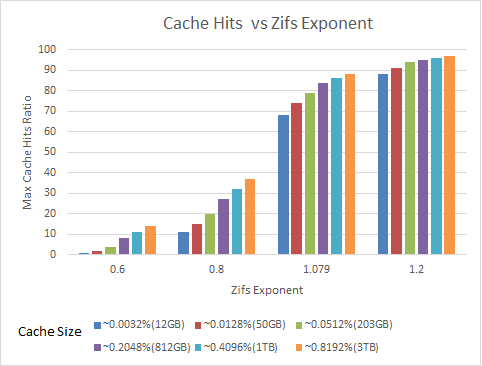Supporting Work
Paper : Towards the use of Online Social Networks for efficient Internet content distribution
The consumption workload in our Paper follows Zipfian distribution with exponent 1.079. We varied the cache size between 0.032% and 0.48% of total number of daily accessed objects to compare LRU with OSN aided caching algorithms. According to a YouTube statistic, each day nearly 476 million unique videos are viewed 4 Billion times or more. Considering average size of a YouTube video as 10 MB, these videos accounts to 4.76 Petabytes of data served on each day. The previous studies have shown that the objects popularity in YouTube and various social networking websites is Zipfian distributed and the Zipfian exponent ranges between 0.6 and 1.2.
Figure 1 shows the maximum cache hit ratio for YouTube workload at various values of Zipf's exponent. As the Zipfian exponent increases, the popularity distribution in YouTube videos become more skewed and therefore, the cache hits ratio increases accordingly. At each exponent value, the increase in cache size from 0.032% to 0.8192%, which corresponds to 12 GB to 3TB of cache storage, leads to increase in cache hits performance. The difference in cache performance on increase in cache storage is higher at lower values of Zipfian exponent compared to cache performance at larger values of Zipfian exponent.

Figure 1

